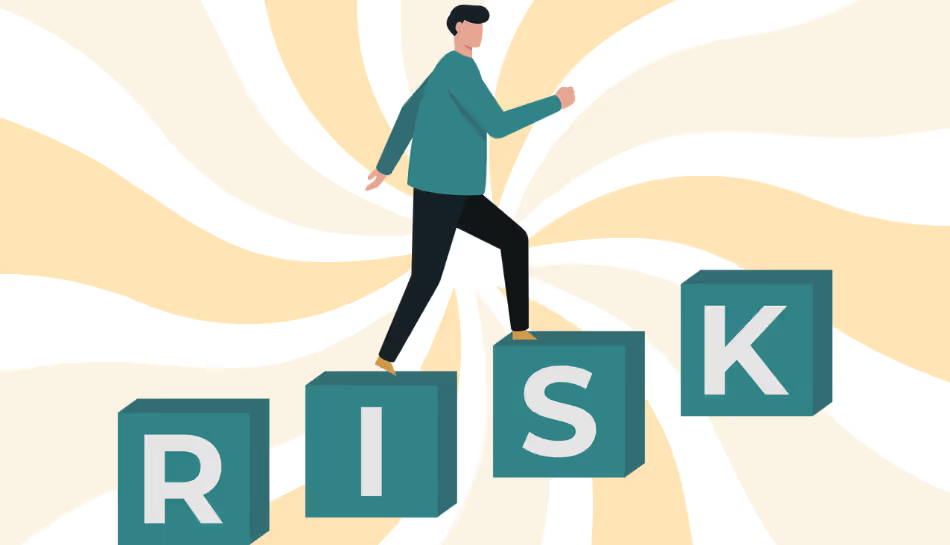
Every business, big or small, has certain risks involved. It could be market changes, data breaches, or compliance issues; the risks can disrupt operations and affect growth. That's where Enterprise Risk Management-ERM-a structured approach that enables an organization to identify, assess, and minimize the occurrence of potential threats well in advance-stepped in.
Understanding Enterprise Risk Management
ERM is a way to identify, evaluate, and control risks throughout every area of an organization. Unlike traditional risk management, which usually focuses on specific departments or specific issues, ERM takes a company-wide approach. It ensures that every variety of risk-financial, operational, strategic, or compliance-related-is understood and managed on a consistent basis.
In other words, ERM is about being prepared for the unexpected. It helps businesses anticipate problems, minimize losses, and create contingency plans so that even when things go wrong, operations don't grind to a standstill.
Why ERM Matters
A strong enterprise risk management framework does more than protect the business; it strengthens decision-making. It is when leaders have a clear view of possible risks that they can plan smarter, allocate resources better, and act with confidence.
In addition, ERM could enable a company to:
- Avoid financial losses by spotting market changes early.
- Protect its reputation by monitoring compliance and security standards.
- Stay resilient by preparing for supply chain disruptions or technology failures.
- Visible measures for risk control to instill investor and stakeholder confidence.
The software for risk management has become an essential element in making ERM effective and efficient in the present digital business environment.
Key Components of Enterprise Risk Management
The ERM process typically contains four major steps:
- 1. Risk Identification: Business firms first identify all risks that could affect objectives. These may be internal, such as process inefficiencies, or external, such as market volatility.
- 2. Risk Assessment: Then, based on the probability and impact, each risk is analyzed. It prioritizes which areas need immediate attention through this enterprise risk assessment.
- 3. Risk Mitigation: Following prioritization, organizations come up with plans for mitigation or aversion of the consequences of these risks. This may mean policy change, investment in cybersecurity, and diversification of vendors.
- 4. Monitoring and Reporting: It is important to remember that risk management is never finished. Continuous monitoring ensures timely identification of emerging threats, while the effectiveness of mitigation strategies is continuously reviewed.
The Role of Technology in ERM
Modern businesses are embracing enterprise risk management software to automate and simplify these processes. Manual tracking and reporting can be time-consuming and prone to human error. With risk management systems, companies can centralize their data, visualize risks in real time, and generate instant reports for decision-makers.
Good risk management solutions also integrate with other enterprise tools like ERP, CRM, and compliance platforms to provide a single view of all potential threats and how they're being managed.
Why Bigsun Leads the Way
When it comes to smart, reliable, and easy-to-use ERM software, Bigsun stands out as a leading choice for modern enterprises. Bigsun’s Enterprise Risk Management Suite is designed to give businesses full visibility of their risk landscape through intuitive dashboards, automated risk tracking, and intelligent reporting.
Bigsun can help businesses to:
- Quickly identify and classify risks using AI-powered assessment tools.
- Automate mitigation workflows for quicker response times.
- Real-time tracking of compliance, audits, and controls.
- Produce reports that contribute to managerial and board decisions. Bigsun helps organizations move beyond risk avoidance to turning risk into opportunity by building resilience and confidence across all operations.
Final Thoughts
Enterprise Risk Management isn’t just about defense, it’s about building a smarter, stronger organization that can adapt to change and uncertainty. Whether it’s financial, operational, or strategic risk, ERM ensures that businesses stay prepared, informed, and agile. And with solutions such as Bigsun's ERM Suite, all aspects of risk can be handled in a proactive and efficient manner to guarantee steady growth and long-term stability.

